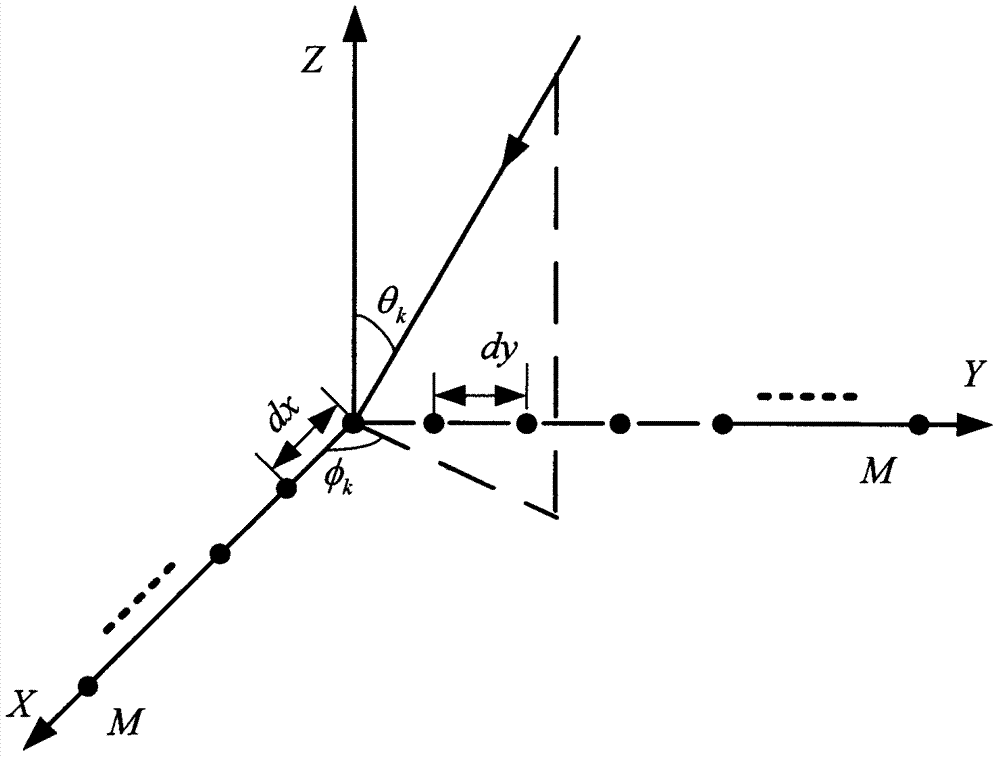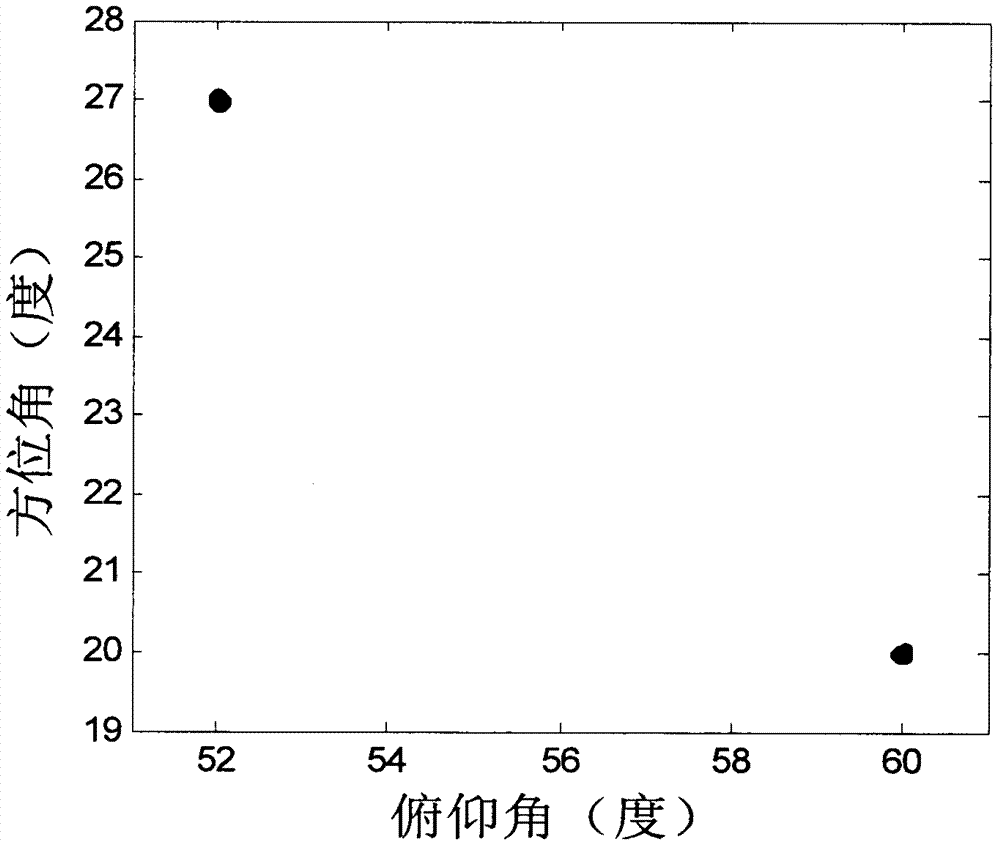Near-field source L-type acoustic vector sensor array ambiguity-resolving multi-parameter estimation method
An acoustic vector sensor and near-field source technology, applied in the field of signal processing, can solve problems such as estimation error, limited accuracy of signal parameter estimation, array phase ambiguity, etc.
- Summary
- Abstract
- Description
- Claims
- Application Information
AI Technical Summary
Problems solved by technology
Method used
Image
Examples
Embodiment Construction
[0040] In order to make the above and other objects, features and advantages of the present invention more apparent, the following specifically cites the embodiments of the present invention, together with the accompanying drawings, for a detailed description as follows.
[0041] figure 1 Shown is a schematic diagram of an acoustic vector sensor array according to an embodiment of the present invention. The acoustic vector sensor array of the present invention is composed of M array elements arranged at equal intervals on the x-axis and M array elements arranged at equal intervals on the y-axis. The array elements on the coordinate origin share two axes, so the entire array has a total of 2M -1 array element, M is the number of array elements on the x-axis (or y-axis), and the distance between array elements on the x-axis is d x and the spacing d between array elements on the y-axis y are greater than a quarter of the minimum wavelength, and the elements of the array are aco...
PUM
 Login to View More
Login to View More Abstract
Description
Claims
Application Information
 Login to View More
Login to View More - R&D
- Intellectual Property
- Life Sciences
- Materials
- Tech Scout
- Unparalleled Data Quality
- Higher Quality Content
- 60% Fewer Hallucinations
Browse by: Latest US Patents, China's latest patents, Technical Efficacy Thesaurus, Application Domain, Technology Topic, Popular Technical Reports.
© 2025 PatSnap. All rights reserved.Legal|Privacy policy|Modern Slavery Act Transparency Statement|Sitemap|About US| Contact US: help@patsnap.com



